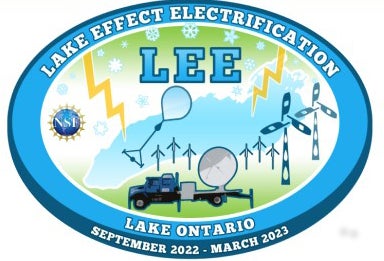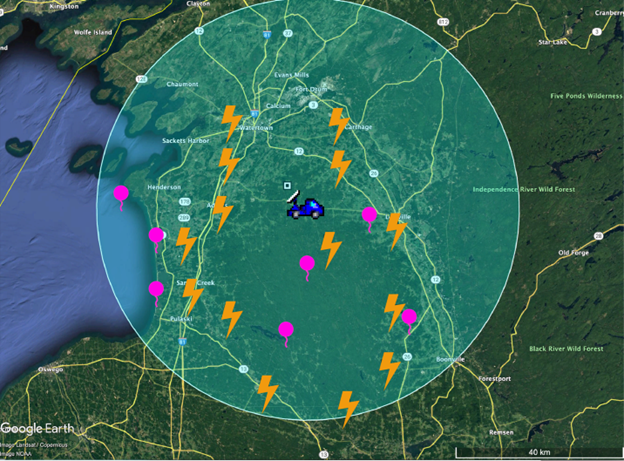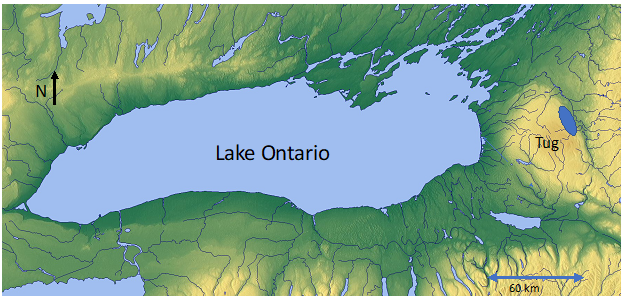LEE
Lake Effect Electrification (LEE) field campaign and the Impacts on Wind Turbines and Electrification East of Lake Ontario
The Lake-Effect Electrification (LEE) Project is focused over and east (the typical downwind/lee side) of Lake Ontario between September 2022 and March 2023. Project LEE aims to document, for the first time, the total lightning and electrical charge structures of lake-effect storms and the associated storm environment using a lightning mapping array (LMA), a dual-polarization X-band radar, and balloon soundings that will measure vertical profiles of temperature, humidity, wind, electric field, and hydrometeor types. Previous work has shown that the Great Lakes, especially Lake Ontario, initiate lightning in a mix of precipitation types during lake-effect storms. Most of the Lake Ontario lightning occurs during single, long-axis precipitation bands. Project LEE also affords the opportunity to improve observations of convective-to-stratiform electrical development due to the shallowness of lake-effect storms and the proximity of these processes to the ground. Finally, lake-effect storm conditions represent minimal thresholds for lightning initiation as many of these storms do not produce lightning.
Principal Investigators
Scott Steiger (State University of New York at Oswego)
Eric Bruning (TTU)
Vanna Chmielewski (CIWRO at OU)
Geoffrey Stano (UAH)
John Trostel (GA Tech)
Data Manager
EOL Archive NCAR/EOL/DMS


